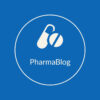Surface Etching Test Procedure | Surface Etching Test of Glass | USP <660 Surface Etching Test |
The Surface Etching Test is used in addition to the Surface Glass Test when it is necessary to determine whether a container has been surface treated and/or to distinguish between Type l and Type ll glass containers. Alternatively, the Glass Grains Test and Surface Glass Test may be used. The Surface Etching Test may be carried out either on unused samples or on samples used in the Surface Glass Test.
Method
Vials and bottles: The volumes of test solution required are shown in Table 1. Rinse the containers twice with Purified Water, fill to the brimful point with a mixture of one volume of hydrofluoric acid and nine volumes of hydrochloric acid, and allow to stand for 10 min. Empty the containers, and rinse carefully five times with Purified Water. Immediately before the test, rinse once again with Purified Water. Submit these containers to the same autoclaving and determination procedure as described in the Surface Glass Test. If the results are considerably higher than those obtained from the original surfaces (by a factor of about 5-10), the samples have been surface treated.
[CAUTION-Hydrofluoric acid is extremely aggressive. Even small quantities can cause life threatening injuries.]
Table 1. Volume of Test Solution and Number of Titrations
| Filling Volume (ml) | Volume of Test Liquid for One Titration (ml) | Number of Titrations |
| NMT 3 | 25.0 | 1 |
| 3-30 | 50.0 | 2 |
| 30 – 100 | 100.0 | 2 |
| NLT 1OO | 100.0 | 3 |
Ampuls, cartridges, and syringes: Apply the test method as described in Vials and Bottles. If the ampuls, cartridges, and syringes are not surface treated, the values obtained are slightly lower than those obtained in the previous tests.
[NOTE-Ampuls, cartridges, and syringes made from Type 1 glass tubing are not normally subjected to internal surface treatment.]
Distinction Between Type I And Type ll Glass Container
The results obtained from the Surface Etching Test are compared to those obtained from the Surface Glass Test.
For Type I glass containers, the values obtained are close to those found in the Surface Glass Test.
For Type ll glass containers, the values obtained greatly exceed those found in the Surface Glass Test; and they are similar to, but not greater than, those obtained for Type Ill glass containers of the same filling volume.
Limit Values for the Surface Glass Test
| Filling Volume (ml) | Maximum Volume of 0.01 M HCI per 100 mL of Test Solution (ml) | |
| Types l and ll | Type lll | |
| NMT 1 | 2.0 | 20.0 |
| 1 – 2 | 1.8 | 17.6 |
| 2 – 3 | 1.6 | 16.1 |
| 3 – 5 | 1.3 | 13.2 |
| 5 – 10 | 1.0 | 10.2 |
| 10 – 20 | 0.80 | 8.1 |
| 20 – 50 | 0.60 | 6.1 |
| 50 – 100 | 0.50 | 4.8 |
| 100 – 200 | 0.40 | 3.8 |
| 200 – 500 | 0.30 | 2.9 |
| NLT 500 | 0.20 | 2.2 |
Also read : USP General Chapter 660 Containers – Glass
